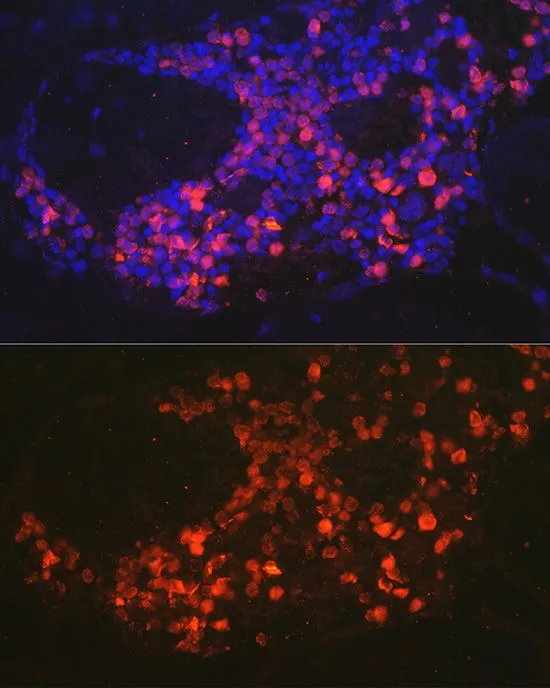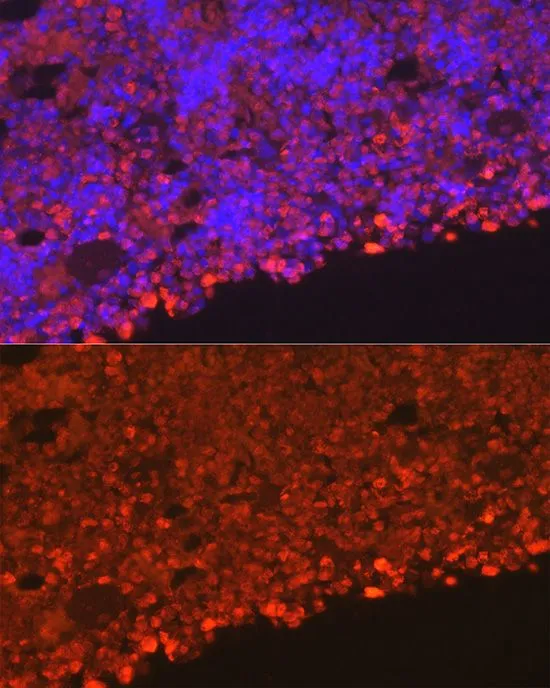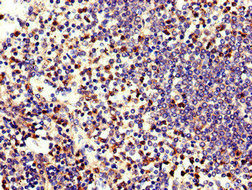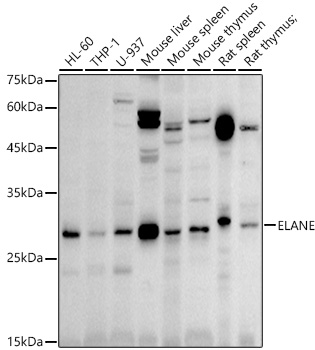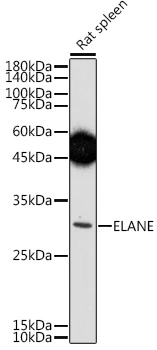
WB analysis of rat spleen tissue lysate using GTX66150 Neutrophil elastase antibody. The signal was developed with ECL plus-Enhanced. Dilution : 1:500 Loading : 25microg per lane
Neutrophil elastase antibody
GTX66150
ApplicationsWestern Blot, ImmunoHistoChemistry, ImmunoHistoChemistry Paraffin
Product group Antibodies
TargetELANE
Overview
- SupplierGeneTex
- Product NameNeutrophil elastase antibody
- Delivery Days Customer9
- Application Supplier NoteWB: 1:500 - 1:2000. *Optimal dilutions/concentrations should be determined by the researcher.Not tested in other applications.
- ApplicationsWestern Blot, ImmunoHistoChemistry, ImmunoHistoChemistry Paraffin
- CertificationResearch Use Only
- ClonalityPolyclonal
- ConjugateUnconjugated
- Gene ID1991
- Target nameELANE
- Target descriptionelastase, neutrophil expressed
- Target synonymsELA2, GE, HLE, HNE, NE, PMN-E, SCN1, neutrophil elastase, PMN elastase, bone marrow serine protease, elastase 2, neutrophil, elastase-2, granulocyte-derived elastase, leukocyte elastase, medullasin, polymorphonuclear elastase, polymorphonuclear leukocyte elastase
- HostRabbit
- IsotypeIgG
- Protein IDP08246
- Protein NameNeutrophil elastase
- Scientific DescriptionElastases form a subfamily of serine proteases that hydrolyze many proteins in addition to elastin. Humans have six elastase genes which encode structurally similar proteins. The encoded preproprotein is proteolytically processed to generate the active protease. Following activation, this protease hydrolyzes proteins within specialized neutrophil lysosomes, called azurophil granules, as well as proteins of the extracellular matrix. The enzyme may play a role in degenerative and inflammatory diseases through proteolysis of collagen-IV and elastin. This protein also degrades the outer membrane protein A (OmpA) of E. coli as well as the virulence factors of such bacteria as Shigella, Salmonella and Yersinia. Mutations in this gene are associated with cyclic neutropenia and severe congenital neutropenia (SCN). This gene is present in a gene cluster on chromosome 19. [provided by RefSeq, Jan 2016]
- Storage Instruction-20°C or -80°C,2°C to 8°C
- UNSPSC12352203
References
- SARS-CoV-2 spike protein induces lung endothelial cell dysfunction and thrombo-inflammation depending on the C3a/C3a receptor signalling.Read more

